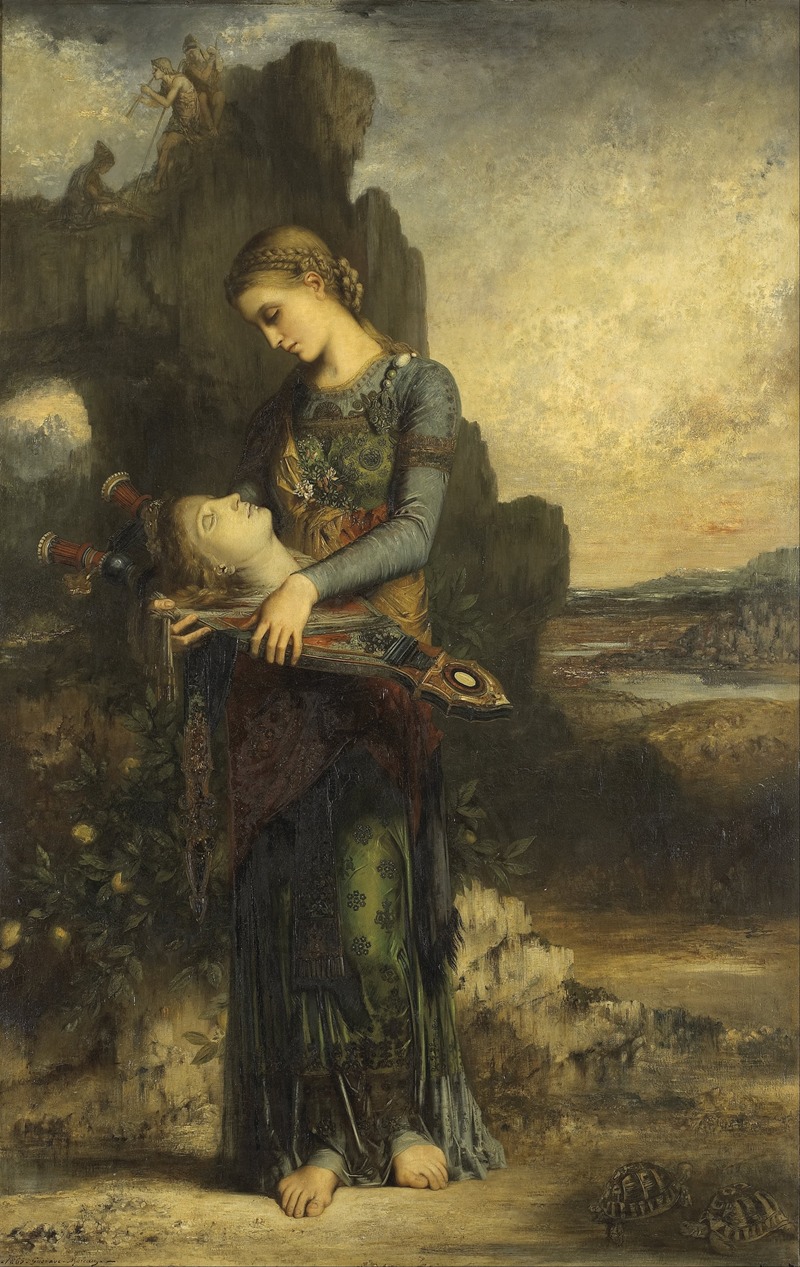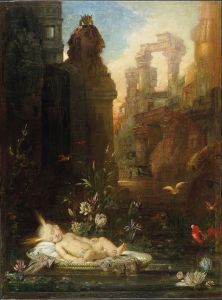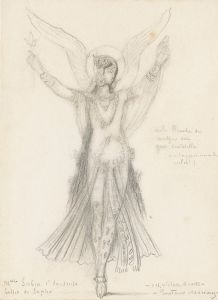
Orpheus
A hand-painted replica of Gustave Moreau’s masterpiece Orpheus, meticulously crafted by professional artists to capture the true essence of the original. Each piece is created with museum-quality canvas and rare mineral pigments, carefully painted by experienced artists with delicate brushstrokes and rich, layered colors to perfectly recreate the texture of the original artwork. Unlike machine-printed reproductions, this hand-painted version brings the painting to life, infused with the artist’s emotions and skill in every stroke. Whether for personal collection or home decoration, it instantly elevates the artistic atmosphere of any space.
"Orpheus" is a notable painting by the French Symbolist artist Gustave Moreau, created in 1865. Moreau, renowned for his intricate and imaginative works, often drew inspiration from mythological and biblical themes, and "Orpheus" is a quintessential example of his fascination with classical mythology.
The painting depicts the tragic figure of Orpheus, a legendary musician, poet, and prophet in ancient Greek mythology. Orpheus is best known for his ability to charm all living things and even inanimate objects with his music. His story is one of love and loss, most famously involving his descent into the Underworld to retrieve his beloved wife, Eurydice, only to lose her again.
In Moreau's "Orpheus," the artist captures a poignant moment after Orpheus's death. According to myth, Orpheus was torn apart by the Maenads, followers of Dionysus, because he spurned all women after losing Eurydice. Moreau's painting, however, does not focus on the violence of Orpheus's demise. Instead, it presents a serene and contemplative scene that emphasizes the enduring power of his music and legacy.
The composition centers on a young Thracian girl who has discovered the severed head of Orpheus, which continues to sing as it floats down the river Hebrus. The girl cradles the head gently, her expression one of reverence and sorrow. This depiction aligns with the mythological narrative that Orpheus's head and lyre, after his death, were carried to the island of Lesbos, where they continued to enchant all who heard them.
Moreau's use of color and detail in "Orpheus" is characteristic of his style, with rich, jewel-like tones and elaborate textures that create a dreamlike quality. The background is lush and verdant, suggesting a timeless, otherworldly landscape that contrasts with the somber subject matter. The painting's ethereal atmosphere reflects Moreau's interest in exploring the mystical and symbolic aspects of his subjects.
"Orpheus" was exhibited at the Salon of 1866, where it garnered attention for its unique interpretation of the myth and its technical mastery. Moreau's work was influential in the Symbolist movement, which sought to express the ineffable and explore themes of spirituality, emotion, and the subconscious. His paintings often invite viewers to delve into a world of imagination and introspection, and "Orpheus" is no exception.
Today, "Orpheus" is housed in the Musée d'Orsay in Paris, where it continues to captivate audiences with its haunting beauty and evocative storytelling. Moreau's ability to blend mythological narrative with a deeply personal artistic vision makes "Orpheus" a significant work in the history of 19th-century art, exemplifying the enduring allure of myth and the power of art to transcend time and space.


















